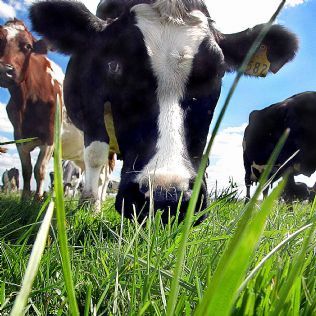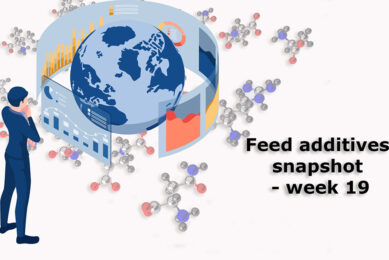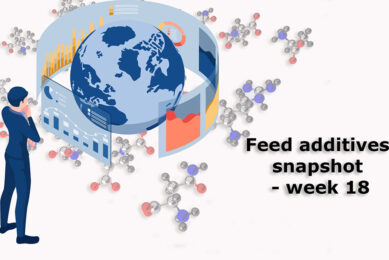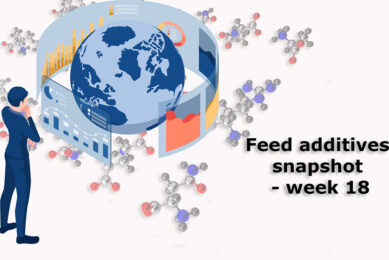Future changes in the global dairy sector

“We have come a long way”, said Erich Erber, founder of Biomin in his opening speech at the World Nutrition Forum. He continued: “But there is more to do, especially in current times where issues such as: the price of feedstuffs, the world population and consumer issues are affecting our business. What will the effects be for the dairy industry?
"We have come a long way", said Erich Erber, founder of Biomin in his opening speech at the World Nutrition Forum. He continued: "But there is more to do, especially in current times where issues such as: the price of feedstuffs, the world population and consumer issues are affecting our business. What will the effects be for the dairy industry?
This was explained excellently by Torsten Hemme from IFCN Dairy Research Centre. IFCN stands for International Farm Comparison Network and has the vision to develop a global research network which links farm economic researchers. I will shortly point out some of the trends that Hemme addressed in his presentation.
Milk production trends
Over the period from 2000 to 2005, while world milk production has grown by nearly 2 percent per year, most of the growth has been in developing countries, particularly Asia, which has witnessed growth rates of twice of global averages. However, in many cases regional trends differ significantly from country specific sector developments. For example, the highest annual growth rate in the world was observed in China, which was supported by strong gains in Inner Mongolia which grew by 17% over the period. These high growth rates are driven by three factors: a) low milk yield at the start period (1,800 kg/cow/year) and rapid increase towards 5,000 kg/cow, b) very low culling rate (10-15%) and c) import of dairy cattle into the region.
From a regional perspective, Europe and South Asia are the most important dairy regions in the world, representing 46% of world milk production. Production declines were observed in Argentina, Russia and Australia. This was mainly driven by political framework, climate and an overall restructuring of the industry. The decrease identified for selected EU countries like in France, Netherlands, Sweden, Ireland can be explained by a) technical quota adjustments due to changing fat contents, b) less undelivered milk (less on-farm use) or c) milk quota not filled.
Dairy prices
The world market price for butter and skim milk powder in the years 1996 to 2006 ranged between 1,000 and 2,000 US-$ per t. In 2007, both prices increased significantly to reach in mid-year 5000 US-$ per ton skim milk powder and 4000 US-$ per ton butter. However, these prices have eased considerably in early 2008, driven by two factors: the increasing milk supply and reaction of consumers on raising prices for dairy products.
Farm gate milk prices per country range from 15 to 74 US-$/100 kg ECM (Energy corrected milk: 4% fat, 3.3% protein). In 2007, domestic milk price movements in different countries didn’t respond the same way to global price movements. In Germany and the USA domestic prices responded quickly with farmers getting high world market prices. However in countries like Belarus or Sri Lanka no reaction to prices was observed.
Dairy farm structure trends
IFCN estimate of dairy farms numbers The IFCN collects data on dairy farm numbers from 73 countries with an aggregated estimate of 115 million dairy farms. Via these data and expert knowledge on dairy farm size the IFCN has estimated the total number of dairy farms in the world as 149 million. Assuming the size of the dairy farm household to be 6 people, this implies about 895 million people are living on dairy farms or approximately 14 % of the world population. This implies that every 7th person in the world is living on a dairy farm. Based on IFCN estimates the world dairy farm size averages 2.4 cows/farm. In most countries, the farm size is below 10 cows. This is especially the case for most countries in Asia, Eastern Europe, Africa and parts of Latin America. Only 15 countries have an average farm size of more than 50 cows. The six countries with a farm size of more than 100 cows per farm are: USA, Argentina, South Africa, Australia, New Zealand and the Czech Republic. The average farm size in the EU-15 countries is 35 cows per farm.
Future developments
The dairy farm numbers are highest in India and Pakistan followed by Ethiopia. Ukraine, Turkey, China, Russia, Uzbekistan, Brazil, Iran and Romania. These countries, on average, have 1 – 2.5 million dairy farms each. By comparison, the aggregate farm numbers in the USA and the EU-15, with 78,300 and 533, 851 farms respectively, look quite small. Dairy farm numbers indicate two trends. In developed dairy countries like the USA, Brazil, Argentina, Europe, South Africa, Japan, New Zealand and Australia dairy farm numbers are declining 2-10 % per year. Most developing countries show a diverse picture of increasing farm numbers with a speed of 0.5-10% per year (Source: IFCN Dairy Report 2007). Similar to trends in dairy farm numbers, two basic trends are evident in farm structure. In developed countries smaller farms are loosing market share, at the expense of larger operations. In developing countries, however, small scale dairy farms dominate milk production and are maintaining or in some cases expanding their market share.
Based on an analysis of farm numbers and changing farm structure IFCN has developed a hypothesis for a dairy development model with two key points. There is a turning point when the number of dairy farms reaches its maximum. Until this point, increasing milk production is a result of increasing farm numbers with usually small size (Example: India, Egypt, etc.) There is a take-off point in dairy development, where exponential growth of farm size starts. This point defines the start of a tremendous structural change in the dairy sector. So far we see countries like the USA or Germany having passed this point. It should be mentioned that not in all countries this pattern will be followed as via investments in large scale milk production units can take the short cut and will provide the milk the countries needs.
For more information, please visit the IFCN website










